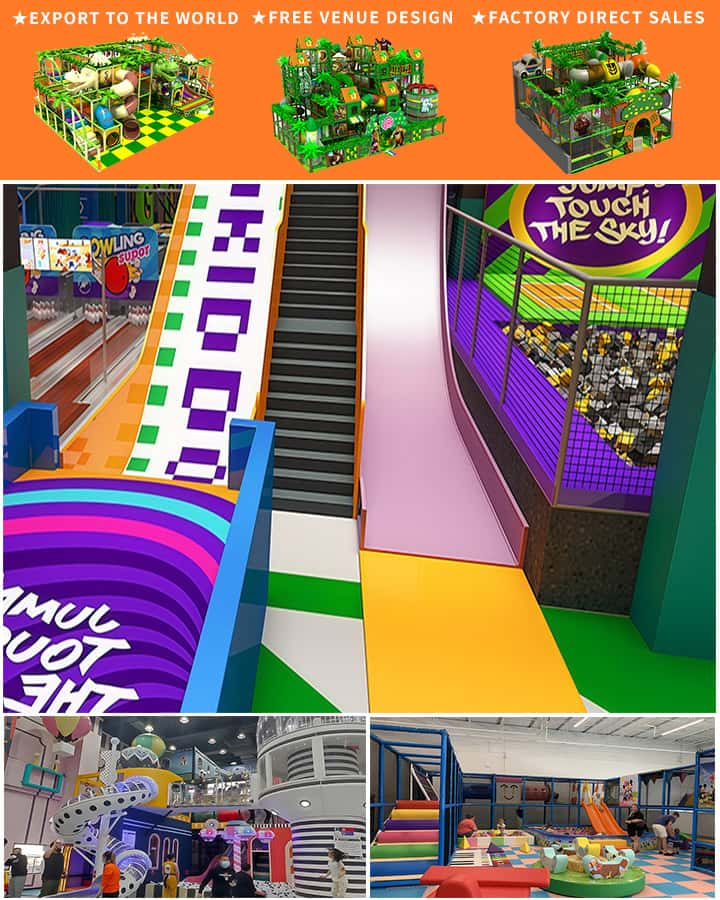Owning an indoor playground can be a rewarding investment, providing children with a safe and engaging place to play while offering business owners a potentially lucrative venture. However, the path to owning one is fraught with various financial considerations that go beyond the initial purchase price. This article delves into the multifaceted costs associated with owning an indoor playground, helping prospective owners make informed financial decisions.
Initial Investment
Purchase or Lease
The first major expenditure is either buying or leasing the indoor playground space itself. If you opt for purchasing property, expect significant upfront costs ranging from $200,000 to over a million dollars, depending on location, size, and the level of customization required. Leasing may offer a more flexible short-term solution but could come at a recurring monthly cost that adds up over time.
Equipment and Installation
Indoor playgrounds are incomplete without state-of-the-art equipment designed to entertain and challenge children safely. Quality climbing structures, slides, ball pits, trampolines, and interactive games can easily cost between \(50,000 to \)150,000. Professional installation, which ensures safety and compliance with local regulations, will add to these expenses.
Licensing and Permits
Before opening your doors, you’ll need to secure the necessary licenses and permits. These vary by location but generally include business licenses, health department permits, and possibly zoning approvals. Costs can range from a few hundred to several thousand dollars, depending on municipal requirements.
Recurring Expenses

Rent
If you are leasing, rent will be a regular monthly outlay. Prime retail locations can command high rental rates, often absorbing a significant portion of your operating budget.
Maintenance and Repairs
Indoor playgrounds endure a lot of wear and tear. Regular maintenance is essential to keep equipment in top condition and ensure ongoing safety. Allocate funds for both routine inspections and unexpected repairs, which can range from minor fixes to major overhauls costing thousands of dollars.
Insurance
Insurance is a non-negotiable expense. Comprehensive liability insurance, which covers potential accidents and injuries, can run into the thousands annually. Don’t neglect this crucial aspect, as it safeguards against unforeseen incidents that could otherwise jeopardize your business.
Staffing
Quality supervision is vital for the safety and enjoyment of young visitors. Hiring trained staff to monitor activities and maintain order is a recurring expense. Salaries, benefits, and training programs must be accounted for in your financial planning.
Marketing and Operations
No business thrives without effective marketing. Digital and traditional advertising campaigns, promotional events, and community engagement efforts require ongoing investment. Additionally, operational costs such as utilities, cleaning services, and software for reservation systems add another layer of expenditure.
Hidden Costs
Utilities
Indoor playgrounds consume considerable electricity, especially if they feature electronic games or climate control systems. Monthly utility bills can be surprisingly high, so factor them into your budgeting.
Software Systems
Modern indoor playgrounds often use advanced software for bookings, waivers, and customer relationship management (CRM). Subscription fees for these systems can add up over time.
Legal Fees
Consultation with legal experts to draft contracts, handle disputes, or navigate regulatory changes can incur additional costs. While not a frequent necessity, legal fees are worth accounting for in long-term financial projections.
Conclusion
Owning an indoor playground is a significant financial commitment that extends far beyond the initial investment. Prospective owners must consider a comprehensive range of costs, from the purchase of equipment to recurring expenses like maintenance and staffing. By understanding the full scope of financial responsibilities, you can better prepare for the challenges and opportunities that come with running a successful indoor playground. With meticulous planning and prudent financial management, owning an indoor playground can indeed become a fruitful venture in both personal satisfaction and profitability.




